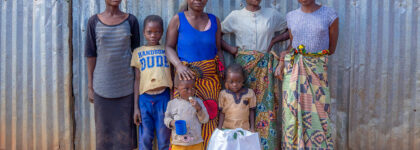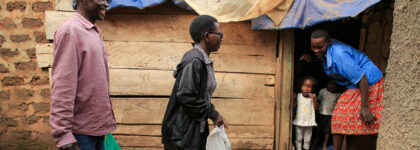In Malawi, nine-year-old Christopher struggles to keep up in school, likely due to cognitive delays caused by ongoing nutritional deficiencies throughout his childhood. In California,…
Did you know?
Nestled between Guatemala and Nicaragua, with El Salvador to the west, Honduras is the second largest country in Central America. It has coastlines on both the Caribbean Sea and the Pacific Ocean, and more than half of the country is covered in mountains. Here are ten things you might not know about Honduras.
1. Ruins of an ancient civilization. On the western side of Honduras, not far from the border of Guatemala, sits the Mayan ruins of Copán. The Maya were some of the earliest people to inhabit Honduras. The city of Copán was once one of the most densely populated areas of the Maya world. Though the city was abandoned over 2,000 years ago, visitors can still wander the stone temples, pyramids, plazas, stairways, and see various altars and monoliths.

2. A bird-watcher’s paradise. In addition to 700+ different species of birds, the scarlet macaw also makes Honduras its home. The scarlet macaw, known as a guacamaya in Honduras, is one of the largest parrots in the world. The bird, with its distinctive red, yellow, and blue feathers, was selected as the national bird of Honduras. Every June 28th, Hondurans honor the bird on Scarlet Macaw Day.

3. The first Banana Republic. When most people hear “banana republic” these days, they think of clothing. But the term was first used to describe a country’s reliance on the export of a single product. American writer O. Henry first used the term in 1904 to describe Honduras’ overreliance on banana exports. By 1929, Honduras had become the world’s main exporter of bananas.

4. One of the oldest clocks in the world. The Comayagua Cathedral clock was built around 1100 AD in Granada Spain. It was transferred to Comayagua, the capital city of Honduras, in the 17th century. The clock runs using gears, ropes, weights, and a pendulum and requires winding every day.
5. “Great Depths.” When Christopher Columbus first set foot on Honduras’ shores, he said, “Thank God we got out of these great depths!” His comment referred to the depth of the ocean off the Honduran coast, but the name stuck. The word Honduras is Spanish for “great depths.”
6. Lots of bats. Over a hundred species of bats have been identified in Honduras, including the adorable Honduran white bat. These tiny white and yellow bats create little “tents” in large Heliconia leaves then huddle up together to sleep. Bats are important to the ecosystem, both for control of insects as well as dispersing seeds and pollen. Over 500 of the world’s plant species rely on bats to pollinate their flowers.

7. Serious about soccer… or fútbol. Hondurans love fútbol so much that they actually went to war with El Salvador. The “Football War”—as it was later nicknamed—lasted only 100 hours and began just weeks after a fútbol game that ended Honduras’ chances of going to the 1970 World Cup. Though the war had more to do with economic and political issues, the emotions that were running high during the sporting event didn’t help the relations between the two countries.

8. One of the largest coral reefs in the world. The Mesoamerican Barrier Reef—running along the coast of Mexico, Belize, Guatemala, and Honduras—is home to over 500 species of fish, 60 species of coral, 350 types of mollusks, as well as several critically endangered species.
9. Honduras has two capitals. Tegucigalpa became the capital city of Honduras in 1880, but the original capital of Honduras is Comayagua. The two capital cities were integrated into one Central District, which was designated as the capital in 1982, making both cities the capitals of Honduras.
10. Children’s Hunger Fund partners with 26 churches in Honduras. More than 50% of the Honduran population lives in poverty. In areas experiencing extreme poverty, the impact is most damaging to children. Children’s Hunger Fund began partnering with churches in Honduras in 2013 with the goal of equipping local churches to serve children and families in need. In 2024, Children’s Hunger Fund plans to resource an additional 12-15 churches in the northern area of San Pedro Sula. Through the gift of a Food Pak filled with nutritious food items, local pastors and church volunteers are able to build relationships with families in need and share the hope of the gospel.





